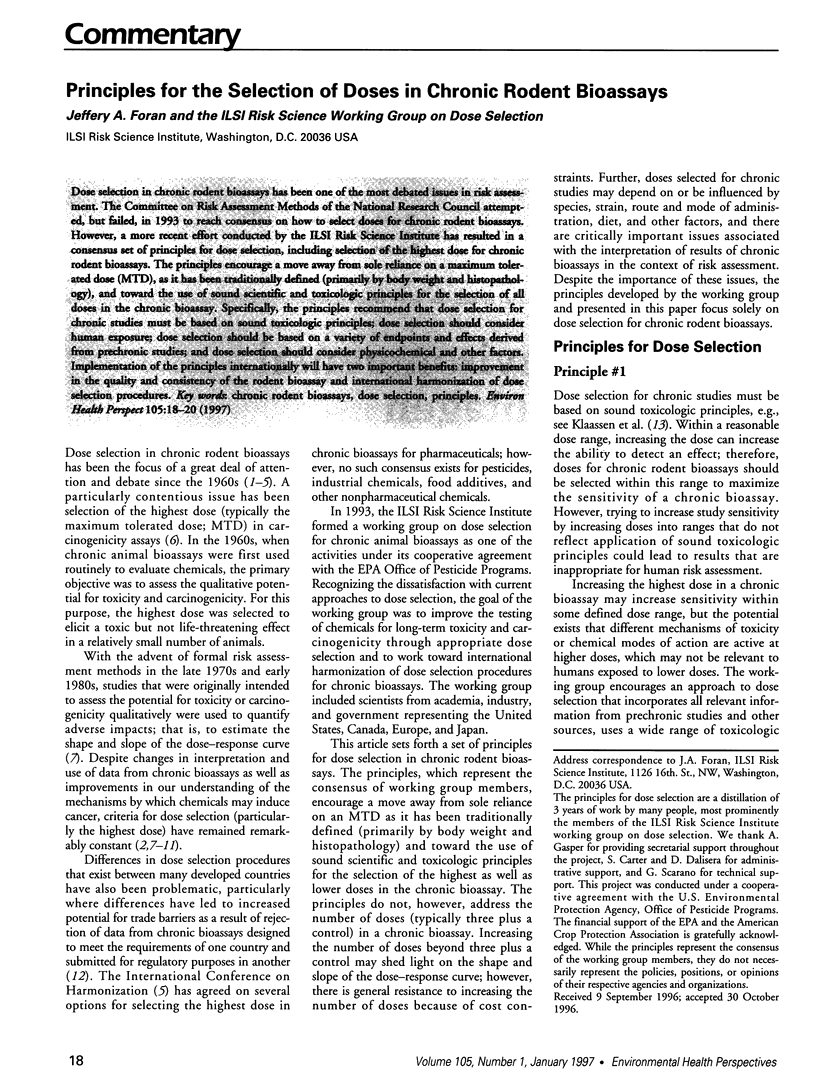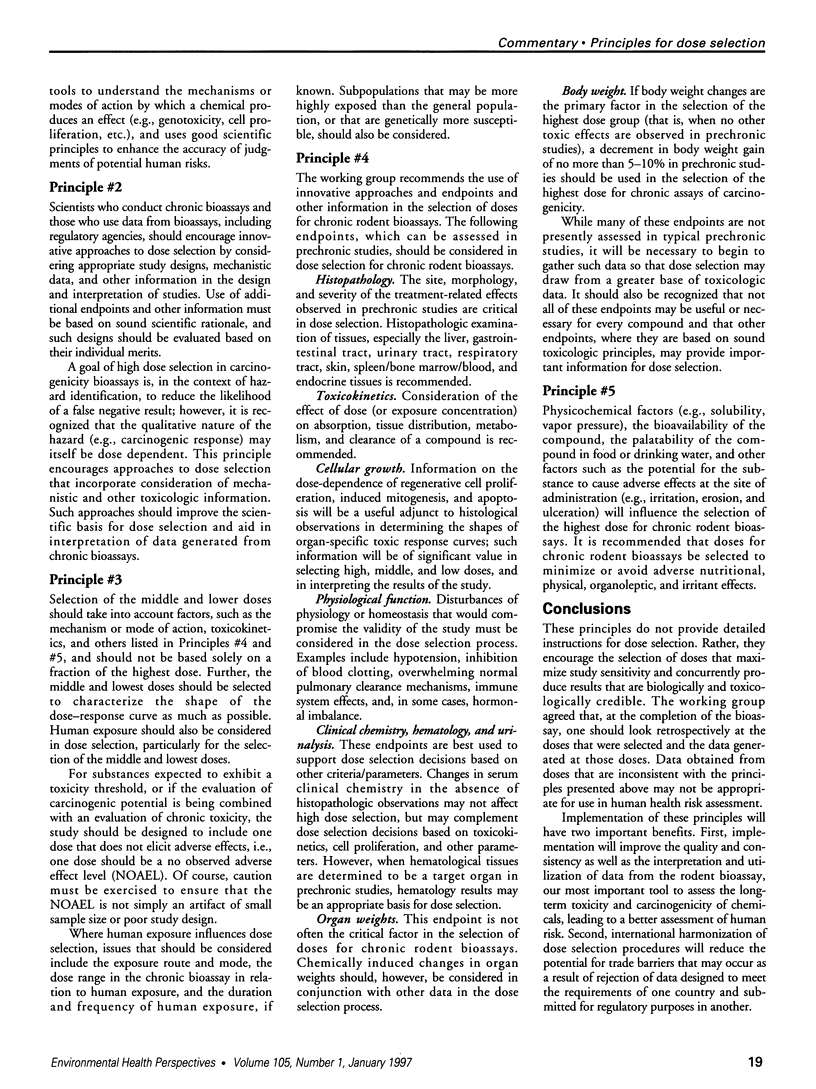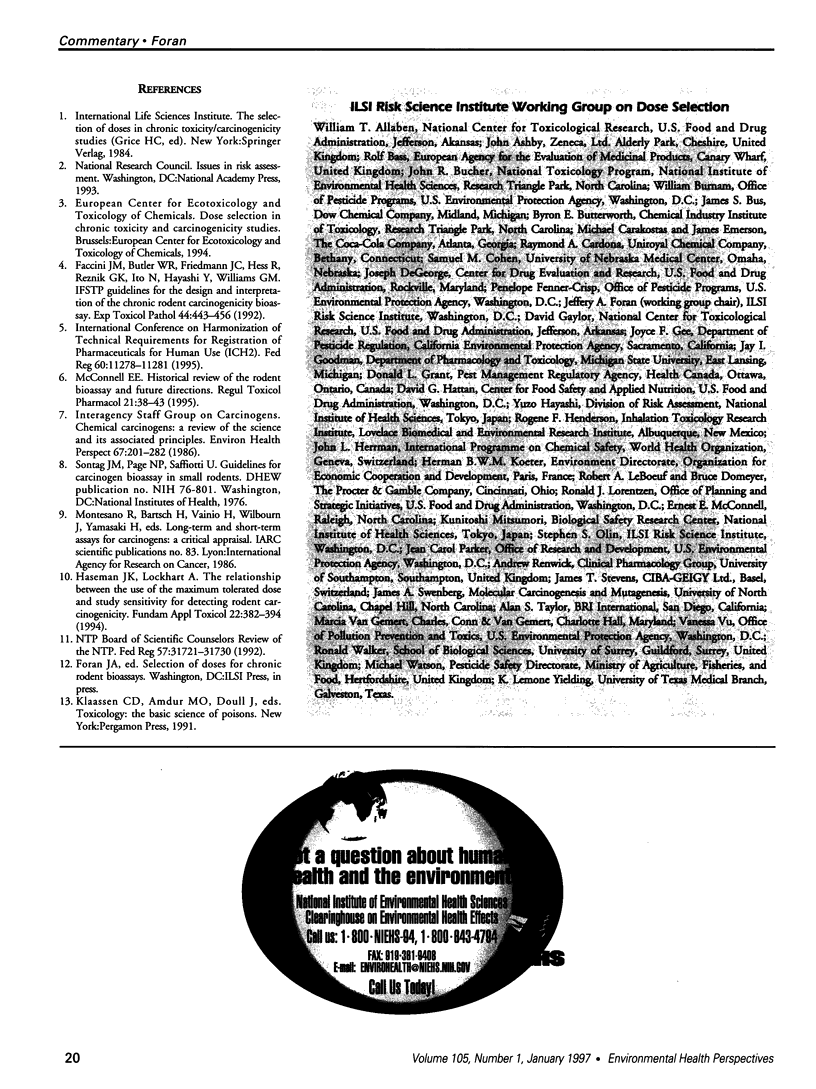Abstract
Dose selection in chronic rodent bioassays has been one of the most debated issues in risk assessment. The Committee on Risk Assessment Methods of the National Research Council attempted, but failed, in 1993 to reach consensus on how to select doses for chronic rodent bioassays. However, a more recent effort conducted by the ILSI Risk Science Institute has resulted in a consensus set of principles for dose selection, including selection of the highest dose for chronic rodent bioassays. The principles encourage a move away from sole reliance on a maximum tolerated dose (MTD), as it has been traditionally defined (primarily by body weight and histopathology), and toward the use of sound scientific and toxicologic principles for the selection of all doses in the chronic bioassay. Specifically, the principles recommend that dose selection for chronic studies must be based on sound toxicologic principles; dose selection should consider human exposure; dose selection should be based on a variety of endpoints and effects derived from prechronic studies; and dose selection should consider physicochemical and other factors. Implementation of the principles internationally will have two important benefits; improvement in the quality and consistency of the rodent bioassay and international harmonization of dose selection procedures.
Full text
PDF


Selected References
These references are in PubMed. This may not be the complete list of references from this article.
- Faccini J. M., Butler W. R., Friedmann J. C., Hess R., Reznik G. K., Ito N., Hayashi Y., Williams G. M. IFSTP guidelines for the design and interpretation of the chronic rodent carcinogenicity bioassay. Exp Toxicol Pathol. 1992 Dec;44(8):443–456. doi: 10.1016/s0940-2993(11)80157-0. [DOI] [PubMed] [Google Scholar]
- Haseman J. K., Lockhart A. The relationship between use of the maximum tolerated dose and study sensitivity for detecting rodent carcinogenicity. Fundam Appl Toxicol. 1994 Apr;22(3):382–391. doi: 10.1006/faat.1994.1043. [DOI] [PubMed] [Google Scholar]
- McConnell E. E. Historical review of the rodent bioassay and future directions. Regul Toxicol Pharmacol. 1995 Feb;21(1):38–86. doi: 10.1006/rtph.1995.1007. [DOI] [PubMed] [Google Scholar]


